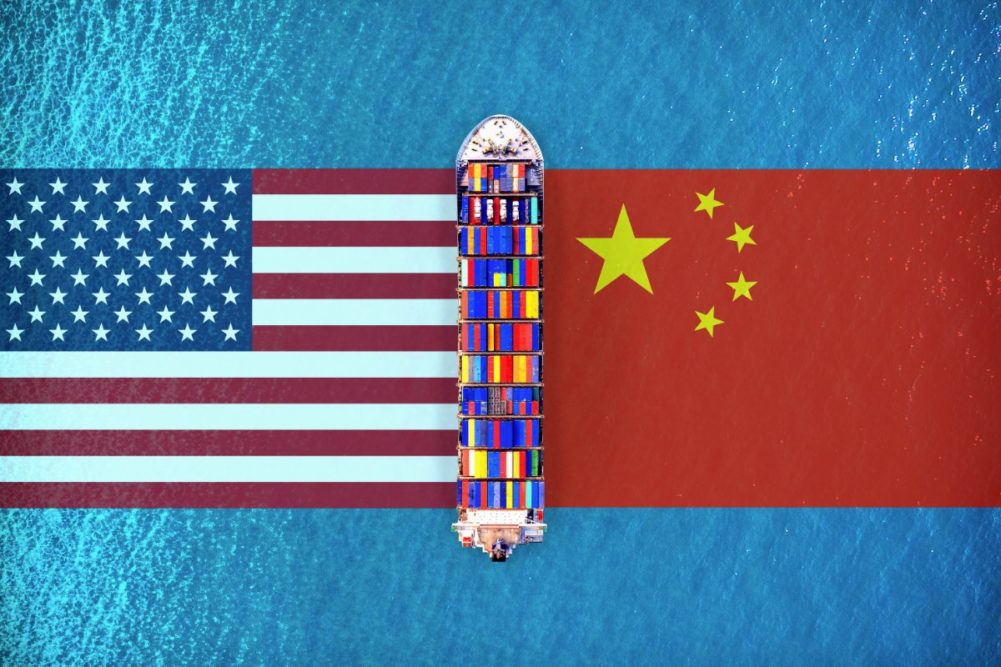WASHINGTON — US Trade Representative Katherine Tai on Oct. 4, speaking at the Center for Strategic and International Studies, outlined the Biden administration’s approach to the US-China trade relationship. Tai said the approach centered on enforcing China’s commitments under the phase one agreement, including those related to purchases of US farm products, and working with allies to curb China’s unfair trading practices not yet fully tackled.
“The US-China trade and economic relationship is one of profound consequence,” Tai said. “As the two largest economies in the world, how we relate to each other does not just affect our two countries, it impacts the entire world and billions of workers.”
Tai said President Joe Biden welcomes competition with China but believes that competition must be managed responsibly and must be fair.
“For too long, China’s lack of adherence to global trading norms has undercut the prosperity of Americans and others around the world,” Tai said. “In recent years, Beijing has doubled down on its state-centered economic system. It is increasingly clear that China’s plans do not include meaningful reforms to address the concerns that have been shared by the United States and many other countries.”
Tai said the key to US global competitiveness begins at home.
“We must invest in research and development and clean energy technology, strengthen our manufacturing base, and incentivize companies to Buy American up and down the supply chain,” she said.
As the United States invests to build a stronger base that will enhance its competitiveness, it must realign its trade policies with China. Tai provided three administration priorities.
“First, we will discuss with China its performance under the phase one agreement,” Tai said. “China made commitments that benefit certain American industries, including agriculture, that we must enforce.”
Second, the administration will begin a targeted tariff exclusion process.
“We will ensure that the existing enforcement structure optimally serves our economic interests,” Tai explained. “We will keep open the potential for additional exclusion processes, as warranted.”
The aim of this process was to mitigate the effects of certain Section 301 tariffs applied against Chinese goods that had the effect of raising costs to Americans.
“Third, we continue to have serious concerns with China’s state-centered and non-market trade practices that were not addressed in the phase one deal,” Tai said. “As we work to enforce the terms of phase one, we will raise these broader policy concerns with Beijing.”
Tai emphasized, “Finally, and critically, we will continue to work with allies to shape the rules for fair trade in the 21st century and facilitate a race to the top for market economies and democracies.”
Tai was critical of the Trump administration’s substituting unilateral US pressure for working with allies in confronting China’s unfair trading practices.
“This led to substantial US tariffs on imports from China, and retaliation by China,” Tai said. “Against this backdrop of rising tensions, in January 2020, the previous administration and China agreed to what is commonly referred to as the phase one agreement.”
Tai said the agreement includes a limited set of commitments covering China’s obligations regarding intellectual property and technology transfer, purchases of American products, and improved access for the agriculture and financial services sectors.
“It has stabilized the market, especially for US agricultural products,” Tai acknowledged. “But our analysis indicates that while commitments in certain areas have been met, and certain business interests have seen benefits, there have been some shortfalls in others.”
Agriculture has been a chief beneficiary of the phase one agreement. This is particularly true for US grains and oilseeds.
In the 2020-21 marketing year concluded Aug. 31, accumulated exports of US soybeans to China totaled about 35.4 million tonnes compared with 15.7 million tonnes in in 2019-20. US soybean exports to China in 2020-21 accounted for about 58% of all US soybean exports in that year.
In the case of corn, the contrast between before and after the phase one agreement was even more pronounced. In the 2020-21 marketing year concluded Aug 31, the US exported about 21.4 million tonnes of corn to China compared with 1.9 million tonnes in the previous year. US corn exports to China in 2020-21 accounted for about 31% of all US corn exports in the year.
But more must be done to ensure China continues to honor its pledge to buy American farm goods, Tai said.
“While we have seen more exports to China in recent years, market share is shrinking, and agriculture remains an unpredictable sector for US farmers and ranchers who have come to rely heavily on this market,” Tai said. “China’s regulatory authorities continue to deploy measures that limit or threaten the market access for our producers.”


